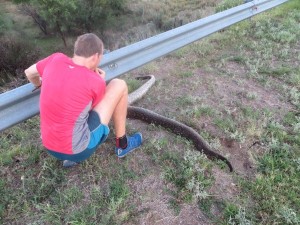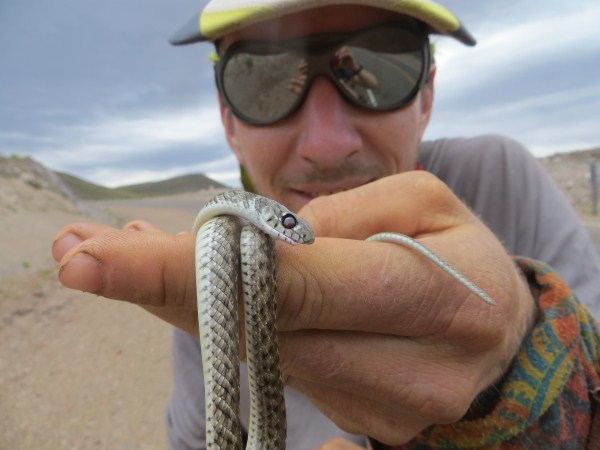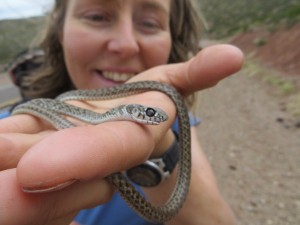Question from six year old Tommy of Dulverton Somerset, UK.
Thank you for asking Tommy! You´ve asked a very popular question. Lots of people are interested in snakes and the species (types) we are seeing. So here goes……..!
The Answer: NO & YES+ VIDEO BELOW!!!
YES: Now that we are in the Tropics and running through the enormous Amazon Basin we see a snake almost everyday. Unfortunately, 90% of the time they are squished on the road by the passing traffic.
Snakes are fascinating and we both love watching them. I remember finding the worn out skins of grass snakes and adders in Devon, UK, when I was a girl. It’s incredible to think that to grow larger and longer, snakes have to lose their entire skin?! Sounds very sore, but it´s just like us cutting our toenails! They also shed their skin to remove parasites and help repair any wounds they have acquired.
Activity Idea: If you would like to find snake skins yourself, the places to look are in scrub and hedgerows- places where the snake can use vegetation to scratch off its old skin. If you are lucky enough to find a complete skin (they are very fragile) you can even see where the snakes eyes and mouth were!!
There are 2,700 snakes in the world, of which the UK has only three (adder, grass snake and smooth snake)! There are many more in South America, where we are now, so we have our time cut out trying to learn some of them! Importantly we need also to learn which species are venomous (only 374 species in the world).
Of course, learning about wildlife makes sense for everyone. The more you know, the more you will find it intriguing and the better equipped you will be for understanding and living in amazing wild places!

One species we are particularly on guard for is the venomous and potentially deadly Fer de Lance (Bothrops asper) which likes to lurk in leaf litter during the day (where I like to wee!) So I walk very slowly, with loud, footsteps and keep my eyes peeled, as snakes are very sensitive to movement and should flee. We also carry a small snake-venom extractor just in case either of us are unlucky enough to be bitten.


Great energy and insight in this video!
Pingback:Questions on Running & Wildlife in South America | 5000 Mile Project